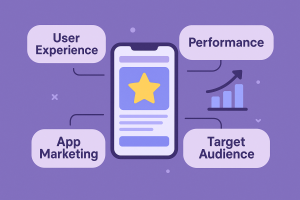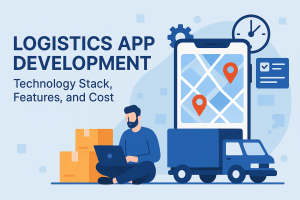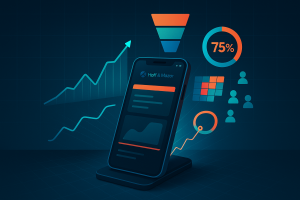The fantasy sports industry has exploded in recent years, fueled by the passion of sports fans and a booming mobile market. If you’ve ever wondered about the cost to develop fantasy sports app, you’re not alone. In this comprehensive guide, we’ll explore everything you need to know—from the factors that influence development costs, to key features that can set your app apart, and a realistic timeline for the entire process. Whether you’re planning to build your first app or expand your portfolio, this article is designed to provide actionable insights and help you plan your project effectively.
The success of a fantasy sports app hinges on both a great concept and the right execution. With intense competition in the market, ensuring that your app delivers a seamless, engaging user experience is paramount. Let’s dive into the details of what it takes to develop a fantasy sports app and how you can manage your budget while creating a feature-rich product.
Understanding the Fantasy Sports App Market
Fantasy sports apps allow users to draft their own teams, compete against friends or other players, and track live performances based on real-world sports events. With millions of fans engaging in fantasy leagues each season, the market is ripe with opportunity. However, the competition is fierce. To stand out, your app must not only provide a robust user experience but also deliver real-time updates, secure transactions, and intuitive features that keep players coming back.
The market has seen a surge in demand for mobile-friendly, interactive fantasy sports platforms. Consumers expect apps that are fast, reliable, and enriched with social features. As the industry continues to evolve, innovations such as augmented reality integrations and AI-driven recommendations are beginning to play a role in enhancing user engagement.
Understanding your target audience is crucial. Are you catering to casual sports fans, or do you plan to attract seasoned fantasy league veterans? This decision will shape your app’s design, functionality, and ultimately, its cost. A successful fantasy sports app must strike a balance between fun, functionality, and reliability.
Factors Affecting the Cost to Develop a Fantasy Sports App
The overall cost to develop a fantasy sports app can vary widely based on several key factors. It’s important to understand these variables to make an informed decision and to plan your budget accurately.
1. Platform Selection
One of the first decisions is choosing which platforms to support—iOS, Android, or both. Developing for multiple platforms increases costs since you may need to create separate native apps or use a cross-platform solution. A cross-platform approach can reduce costs, but may come with trade-offs in performance or user experience.
2. Complexity and Feature Set
The complexity of your app is a major determinant of cost. A basic fantasy sports app might include user registration, team selection, live scoring, and payment processing. However, more advanced features—such as in-app chat, real-time notifications, data analytics, and social sharing—will drive up development costs. The level of complexity affects the number of development hours and the need for specialized skills.
3. Design and User Experience
An intuitive, engaging user interface (UI) is essential for keeping users active and satisfied. High-quality design requires experienced UI/UX designers who can create a visually appealing and user-friendly app. The cost of design also includes iterative user testing and refinements to ensure that the app meets user expectations.
4. Backend Infrastructure
A robust backend is the backbone of any fantasy sports app. It handles user data, game logic, real-time updates, and interactions with external data sources (such as sports statistics APIs). Developing a scalable and secure backend can be one of the more expensive parts of the project, especially if you anticipate high traffic volumes during peak sports seasons.
5. Third-Party Integrations
Integrating third-party services for live sports data, payment gateways, and analytics can add to your budget. Licensing fees for data providers and subscription costs for services must be factored into the overall cost.
6. Development Team Location
The geographical location of your development team has a significant impact on cost. Outsourcing to regions with lower labor costs is an increasingly popular option. For instance, leveraging Offshore Mobile App Development services can offer substantial savings without compromising on quality.
7. Maintenance and Updates
Post-launch maintenance is a critical aspect of app development. Ongoing support, updates, and bug fixes are essential to ensure that the app remains secure and competitive. Maintenance costs should be factored into your long-term budget planning.
8. Marketing and User Acquisition
While not a direct development cost, effective marketing and user acquisition strategies are essential to the success of your app. Budgeting for digital marketing, social media promotions, and search engine optimization (SEO) is necessary to reach your target audience.
Key Features of a Successful Fantasy Sports App
Building a fantasy sports app involves a careful selection of features that enhance user engagement, improve retention, and ensure smooth gameplay. Below are some of the key features that you should consider including:
User Registration and Profiles
- Simple Onboarding: Allow users to sign up quickly using social media or email.
- Profile Customization: Enable users to create detailed profiles with avatars, bio, and preferences.
- Security Measures: Use two-factor authentication and robust data encryption to protect user information.
Team Selection and Management
- Draft System: Provide a user-friendly interface for team drafting, either manually or via auto-draft.
- Team Customization: Allow users to create and modify teams, with options for substitutions and lineup changes.
- Performance Tracking: Display player stats and historical performance data to help users make informed decisions.
Real-Time Scoring and Live Updates
- Live Game Integration: Offer real-time scoring updates and live game tracking.
- Push Notifications: Send alerts for score changes, game results, and other important events.
- Interactive Dashboards: Present dynamic dashboards that show live statistics and leaderboards.
Payment Integration and Monetization
- Secure Payment Gateways: Integrate trusted payment processors to handle in-app purchases and entry fees.
- Subscription Models: Offer premium features through subscription plans.
- Ad Integration: Consider incorporating advertisements to generate additional revenue.
Social and Community Features
- In-App Chat and Forums: Create community spaces where users can discuss strategies and engage with each other.
- Social Sharing: Allow users to share their achievements and invite friends through social media.
- Leaderboard and Competitions: Foster a competitive environment with rankings, awards, and tournaments.
Data Analytics and Insights
- User Behavior Analytics: Track user interactions to understand behavior and improve the app.
- Performance Metrics: Provide detailed statistics and performance insights for players and teams.
- Custom Reports: Offer personalized reports that help users track their progress and make strategic decisions.
Additional Features
- Customization Options: Allow users to customize the app’s appearance and settings.
- Customer Support: Provide in-app support, FAQs, and troubleshooting guides.
- Compliance and Security: Ensure the app complies with relevant regulations and industry standards for data protection.
Each of these features adds to the overall cost, but they also provide a competitive edge. Investing in a robust feature set can differentiate your app in a crowded market.
Development Timeline: From Concept to Launch
Developing a fantasy sports app is a complex process that involves multiple phases. Here’s an overview of the typical timeline:
1. Planning and Research (1-2 Months)
- Market Research: Understand your target audience and analyze competitor apps.
- Requirement Gathering: Define the scope of the project, including key features and functionalities.
- Project Planning: Create a detailed roadmap outlining milestones, deliverables, and deadlines.
- Budget Estimation: Establish a realistic budget based on initial research and requirements.
2. Design Phase (2-3 Months)
- Wireframing: Develop basic sketches and wireframes to visualize the app layout.
- UI/UX Design: Create detailed design mockups and prototypes. Focus on user experience to ensure an intuitive interface.
- Feedback and Iteration: Gather feedback from stakeholders and potential users, and iterate on the design.
3. Development Phase (4-6 Months)
- Frontend Development: Build the user interface and implement design elements.
- Backend Development: Develop server-side logic, database integration, and APIs.
- Third-Party Integrations: Integrate external services such as live sports data and payment gateways.
- Regular Testing: Conduct unit testing and integration testing throughout the development phase to ensure stability and performance.
4. Testing & Quality Assurance (1-2 Months)
- Beta Testing: Release a beta version to a limited audience to gather real-world feedback.
- Bug Fixes: Identify and resolve any issues, ensuring that the app performs well under different conditions.
- Performance Optimization: Fine-tune the app to handle high traffic volumes and real-time data updates.
5. Launch and Post-Launch Support (Ongoing)
- App Deployment: Launch the app on app stores and ensure that it meets all submission guidelines.
- Marketing and Promotion: Implement a marketing strategy to acquire users and generate buzz.
- Maintenance: Provide ongoing support, updates, and improvements based on user feedback.
A realistic timeline for a full-scale fantasy sports app can range from 8 to 12 months, depending on complexity and the development team’s expertise.
Cost Estimation: Breaking Down the Budget
The cost to develop a fantasy sports app can vary significantly based on factors like feature set, platform, and development team location. Below is a general cost breakdown to give you an idea of what to expect.
1. Design and UI/UX
- Wireframing and Prototyping: $5,000 – $15,000
- High-Fidelity UI/UX Design: $10,000 – $30,000
A well-designed app can significantly enhance user engagement and retention. Quality design is an investment that pays off in the long run.
2. Frontend and Backend Development
- Frontend Development: $20,000 – $50,000
- Backend Development and API Integration: $30,000 – $80,000
- Third-Party Integrations: $5,000 – $20,000
The complexity of your app largely determines development costs. More sophisticated features such as live scoring and real-time updates require additional resources.
3. Quality Assurance and Testing
- QA Testing: $5,000 – $15,000
- Beta Testing and Iteration: $3,000 – $10,000
Quality assurance is crucial to ensure that your app is reliable and performs well under various conditions.
4. Maintenance and Updates
- Ongoing Maintenance: $2,000 – $5,000 per month
- Feature Enhancements: Budgeted as part of your long-term roadmap
Post-launch support is essential to keep your app competitive and secure.
5. Additional Costs
- Marketing and User Acquisition: Costs vary based on strategy and target audience.
- Licensing and Legal Fees: Depending on your region and regulatory requirements.
Total Estimated Cost
For a moderately complex fantasy sports app, the overall development cost can range from $70,000 to $200,000. High-end, feature-rich apps with extensive real-time capabilities can exceed this range.
The cost may also vary based on the location of your development team. If you’re looking to reduce expenses, you might explore options to hire mobile app developer services, which can help you achieve quality results while keeping costs manageable.
Choosing the Right Development Partner
Selecting the right team to develop your fantasy sports app is critical. The quality of your development partner directly impacts the final product. Here are some factors to consider:
Expertise and Experience
Look for developers with a proven track record in building complex, interactive apps. Experience in the sports or gaming industry can be a significant plus. Read reviews and case studies to get a sense of their capabilities.
Geographical Considerations
The location of your development team influences cost and communication. Many businesses turn to Offshore Mobile App Development for cost-effective solutions without sacrificing quality.
Local vs. Global Talent
If you prefer working with a team close to home, a quick search for App Developers Near Me might help you find qualified professionals in your region.
Hiring Strategies
When it comes to scaling your development team, you might consider whether to hire in-house or to outsource. For a deeper dive into the pros and cons of various hiring models, check out our detailed guide to app developers near me benefits pricing hiring and trends.
Evaluating Portfolios
Review portfolios to assess the quality and innovation of previous projects. Resources like finding the best app developers near you can offer insights into local talent and provide benchmarks.
Tips for Beginners
For those new to the app development process, our mobile app development a guide for beginners offers essential tips and best practices to ensure your project gets off to a strong start.
Avoiding Pitfalls
Learn from others’ experiences by reviewing the 5 common mistakes to avoid in mobile app development. This advice can save you time, money, and stress during the development process.
Industry Trends
Staying current with industry trends is essential for a competitive product. Insights from tech etruesports history reviews future trends can provide valuable context on where the fantasy sports market is heading.
Choosing the Right Tools
Finally, selecting the proper technology stack and development tools is crucial. Referencing the best app development software can help you decide on a platform that meets your needs for scalability, performance, and ease of integration.
Real-World Examples and Case Studies
To put things into perspective, let’s examine a couple of hypothetical case studies that illustrate the range of costs and timelines involved in developing a fantasy sports app.
Case Study 1: A Basic Fantasy Sports App
Overview:
A startup aims to launch a basic fantasy sports app that allows users to create leagues, draft teams, and track live scores. The focus is on core functionality and a clean, user-friendly interface.
Features:
- User registration and profile management
- Basic team drafting and management
- Real-time score updates
- Simple payment integration for league entry fees
Timeline:
- Planning and design: 2-3 months
- Development: 4 months
- Testing and launch: 1-2 months
Estimated Cost:
- Total cost estimated between $70,000 and $100,000
This project highlights the importance of a lean, functional design that prioritizes essential features over advanced customization. By focusing on core functionalities, the app can be brought to market quickly while leaving room for future enhancements.
Case Study 2: A Premium Fantasy Sports App
Overview:
A more established sports brand decides to develop a premium fantasy sports app that offers an enhanced user experience with advanced features such as in-depth analytics, social interaction, and extensive customization options.
Features:
- Advanced user profiles with customization
- Comprehensive league management and real-time analytics
- Live streaming integration and detailed statistics
- Social features including chat, forums, and leaderboards
- Multiple payment options and subscription models
Timeline:
- Planning and research: 2 months
- Detailed design and prototyping: 3 months
- Full-scale development: 6 months
- Testing and quality assurance: 2 months
Estimated Cost:
- Total cost estimated between $150,000 and $250,000
This scenario demonstrates the cost implications of adding advanced features and emphasizes the need for thorough planning and an experienced development team.
Conclusion
Developing a fantasy sports app is a multifaceted process that requires careful planning, a clear understanding of user needs, and a well-defined budget. The cost to develop fantasy sports app can range significantly depending on factors such as platform choice, feature set, design quality, and development team location. From basic apps with core functionalities to premium solutions with advanced analytics and live interactions, every project has unique demands.
Planning your budget wisely involves not just the initial development costs but also ongoing maintenance, marketing, and feature enhancements. By understanding the key cost drivers—from design and development to third-party integrations and support—you can better prepare for the financial investment required.
Choosing the right development partner is equally important. Whether you decide to leverage the benefits of Offshore Mobile App Development, search for App Developers Near Me, or decide to hire mobile app developer services, ensuring that you work with a team that understands your vision is critical to success. Utilize resources like our comprehensive guides on hiring and development best practices to navigate the process efficiently.







